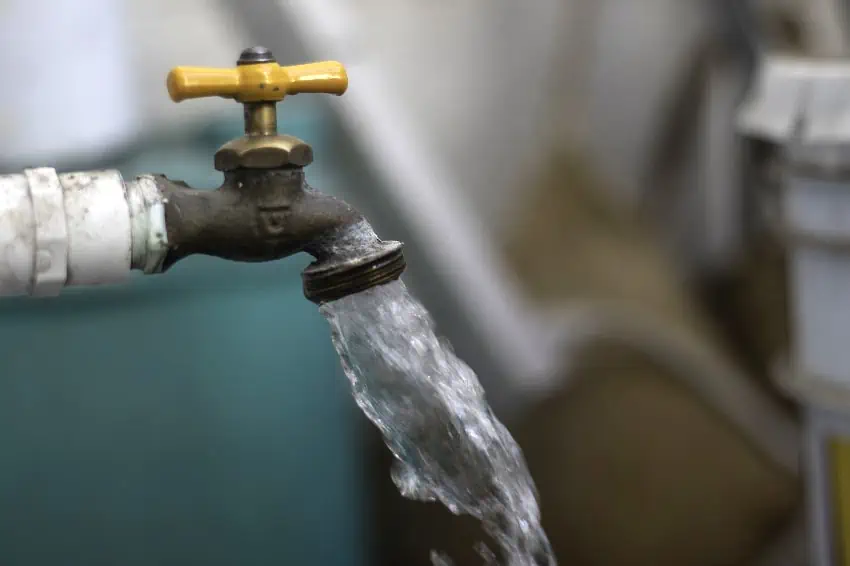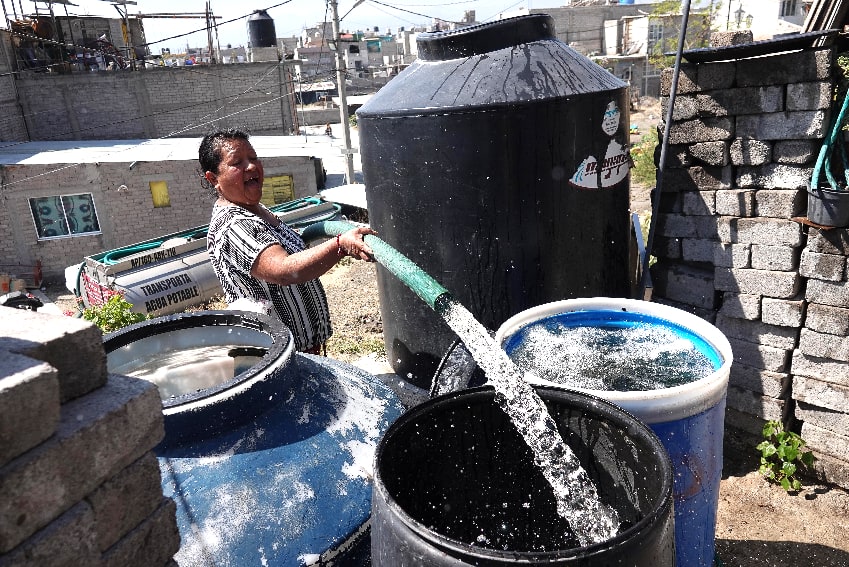A look back at the year’s water headlines

Mexico’s complex relationship with water — from severe shortages to infrastructure challenges — shapes daily life across the nation.
Given the ever-accelerating impacts of climate change, reporting about water resources often falls into the alarmist category. We wanted to change that narrative.

Launched this year, MND’s Water in Mexico series examines the critical issues facing Mexico’s water resources by focusing on the brilliant ideas, people and companies providing hope and solutions.
Here’s a look back at the highlights of this special series, which tells the story of water in Mexico as it evolved throughout 2024.
A crisis point?
In the spring of 2024, residents of Mexico City prepared for an impending “Day Zero” that — fortunately — never came.
In May, nearly 76% of Mexico was experiencing drought conditions, according to the Drought Monitoring Agency of the National Meteorological Service (SMN). The capital’s Cutzamala System, which supplies water for approximately 22 million people, was below 30% of its capacity.


By many international media accounts — the Associated Press, Bloomberg and the Washington Post, among others — the city was set to reach “Day Zero,” a day when not a single drop of water would fall from the faucets, on June 26.
“Day Zero” didn’t happen in 2024. But could it happen in 2025?
As Nancy Moya writes, “With Mexico’s water crisis deepening, the nation’s ability to manage its most vital resource is increasingly at stake.”
Learn more about the particular problems impacting Mexico’s water security and what experts suggest should be done:
Mexico’s water crisis: Day Zero and the looming threat of scarcity
Private sector support
While Mexico’s water crisis dominated headlines in 2024, another trend captured international attention: nearshoring.
These issues are inextricably linked, as the success of nearshoring initiatives heavily depends on the availability and reliability of water resources and infrastructure.
In the first quarter of 2024, foreign direct investment (FDI) in Mexico reached a record US $20.3 billion, representing a 9% increase compared to the same period in 2023. As we approach the end of 2024, estimates indicate that Mexico is on track to break last year’s top sum of $36 billion.
While industrial water consumption currently represents only 4% of Mexico’s total water usage, the influx of new businesses is putting pressure on the available infrastructure and supply.
Mexico currently invests less than 1% of its GDP in infrastructure development when it should allocate at least 5%, according to the president of the Mexican Chamber of the Construction Industry (CMIC) Francisco Solares.
Fortunately, the increased presence of foreign companies through nearshoring could potentially catalyze the necessary infrastructure investments to mitigate water scarcity. As businesses relocate to Mexico, they bring not only economic opportunities but also the potential for technological advancements and sustainable practices in water management.
Siemens, for example, is developing automation and electrification technologies that could have a significant impact on the water and energy industries in Mexico. Read more about them here:
Siemens shows how industry can help solve Mexico’s water and energy challenges: A perspective from our CEO
And in November, President Claudia Sheinbaum made it clear she supports “sharing the weight” of water security with the business sector.
Mexico’s governors sign Sheinbaum pact to improve water use by industry
Read about Sheinbaum’s new national Water Plan here.
Community-led solutions
In addition to the private sector, communities across Mexico are spearheading innovative solutions to Mexico’s water crisis — from rainwater harvesting systems to water-efficient agriculture.
Mexico’s water crisis is complicated by widespread contamination, with a 2020 study finding that 8.8 million people are exposed to unsafe arsenic levels and over 3 million to excessive fluoride levels.
What’s polluting Mexico’s groundwater?
Organizations like Caminos de Agua are addressing this through water treatment plants and rainwater harvesting, while researchers at UNAM are developing electro-deionization techniques to remove contaminants.
Meanwhile, the Tikkun Eco Center in San Miguel de Allende is working to improve water access through their Agua Para la Vida project, which restores water reservoirs and implements reforestation efforts, successfully rehabilitating the San José de Gracia reservoir to hold 45 million liters of water.
Restoring water to San Miguel de Allende, one reservoir at a time
As we look ahead to 2025, we remain committed to spotlighting initiatives that bolster Mexico’s water security. We invite our readers to be active participants in this crucial dialogue. If you’re aware of or involved in any water-related projects or innovations, we encourage you to share them with us at [email protected].
Find the rest of our year in water headlines here.
Source: Mexico News Daily

